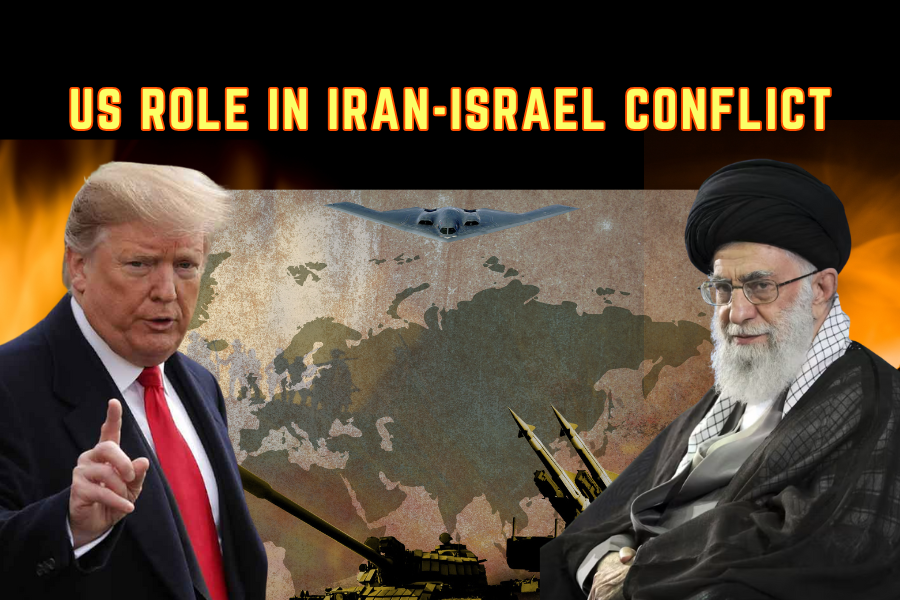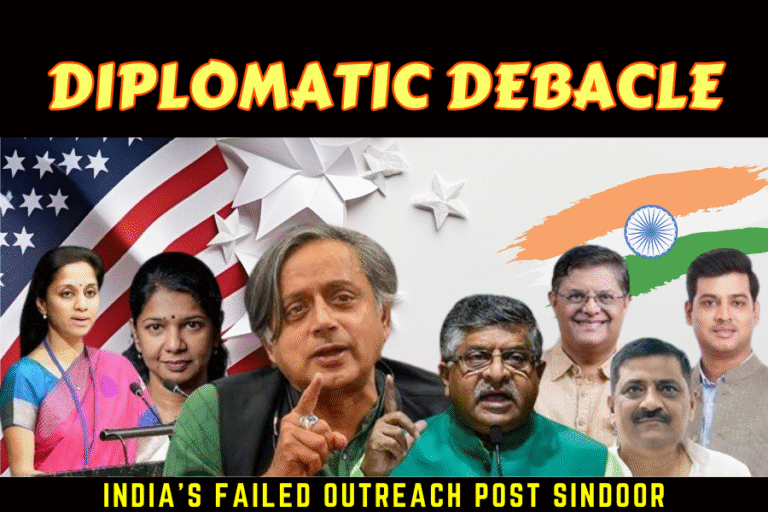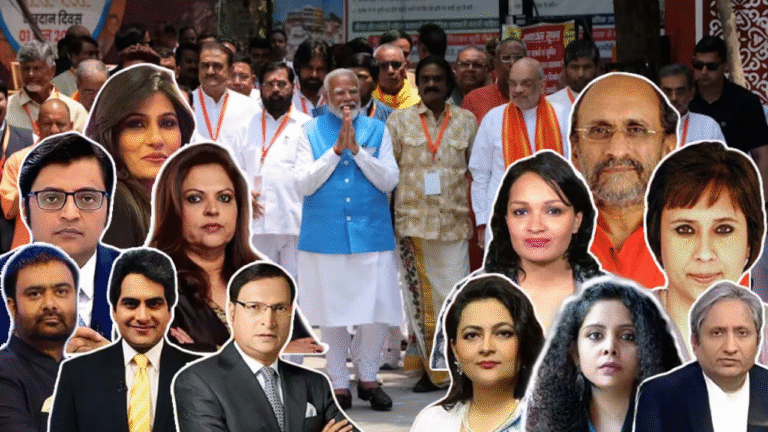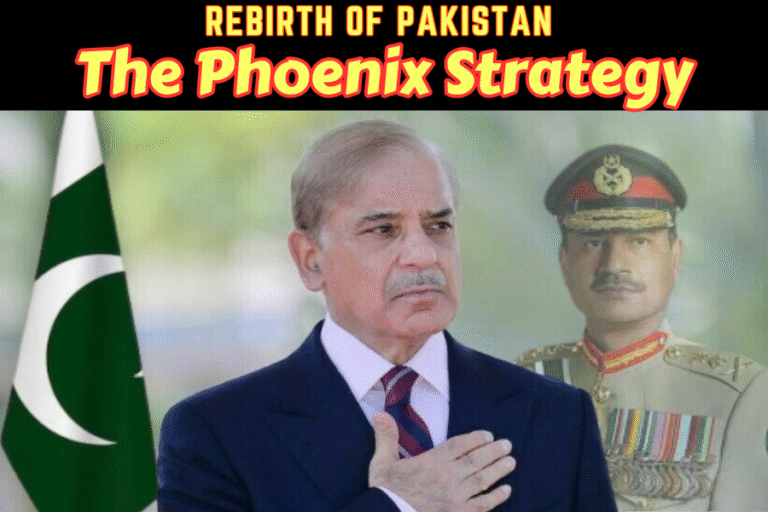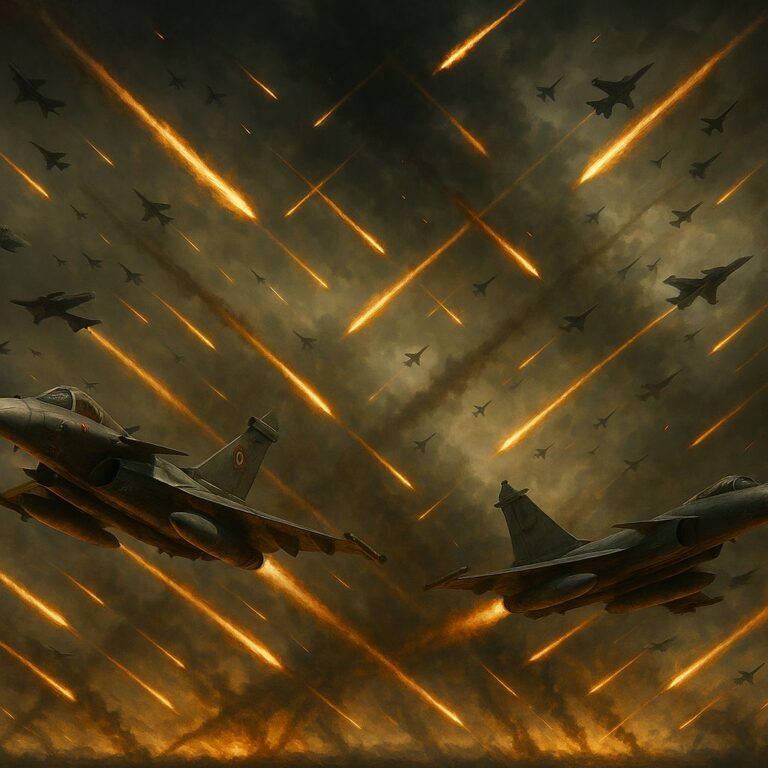(By Khalid Masood)
The Middle East, a crucible of conflict and ambition, stands at the precipice of a new conflagration. As Israel and Iran exchange missile and drone strikes in June 2025, the spectre of U.S. military intervention looms large, threatening to engulf the region. U.S. President Donald Trump’s refusal to rule out providing Israel with bunker-busting bombs to target Iran’s nuclear facilities, coupled with Supreme Leader Ayatollah Ali Khamenei’s defiance against U.S. calls for surrender, has thrust the world into perilous uncertainty. On 18 June 2025, Trump hosted Pakistan’s Chief of Army Staff, Field Marshal Asim Munir, for an unprecedented White House lunch, a move laden with geopolitical implications. This article probes the question: Could the U.S. be headed into another war in the Middle East? Drawing on expert insights and recent developments, it examines the risks, motivations, the White House meeting, and potential consequences of U.S. involvement, arguing that Pakistan’s strategic interests demand a diplomatic approach to avert catastrophe.
I. The Escalating Israel–Iran Conflict: A Powder Keg Awaiting a Spark
The crisis, now in its eighth day on 20 June 2025, marks a dramatic escalation in the Israel–Iran shadow war. Israel’s strikes, launched on 13 June, targeted Iran’s nuclear facilities, missile factories, and senior IRGC commanders, including Hossein Salami and Mohammad Bagheri. Iran retaliated with ballistic missiles and drones, striking Tel Aviv and Other cities, killing 24 Israelis. Israel claims its assaults have set back Iran’s nuclear programme significantly, yet the Fordo enrichment site, buried in a mountain, requires U.S.-made “mountain-buster” bombs to destroy.
President Trump’s rhetoric oscillates between restraint and belligerence. On 18 June, he claimed U.S. air superiority over Iran and called Khamenei “an easy target,” while suggesting negotiations remain possible. His demand for Iran’s “unconditional surrender” and the deployment of the USS Nimitz to the Middle East signal intervention readiness. Iran’s response is resolute: Khamenei warned that U.S. action would cause “irreparable damage,” and Ambassador Ali Bahreini vowed a “strong response.” Trump’s lunch with Field Marshal Munir, where he praised Munir’s role in averting an Indo–Pakistani war, underscores Pakistan’s strategic relevance amid this crisis, with Trump noting Pakistan’s deep understanding of Iran. This meeting, coupled with Trump’s unpredictability, raises the prospect of a broader war.
For Pakistan, a regional power with ties to Iran and a history of navigating U.S. pressures, this conflict is a diplomatic minefield. Islamabad’s proximity, shared border, and suspicion of Western motives necessitate a clear-eyed assessment of U.S. intervention’s risks to stability and Pakistan’s security.
II. The Trump–Munir Meeting: A Strategic Pivot with Regional Implications
On 18 June 2025, President Trump hosted Field Marshal (FM) Asim Munir for a closed-door lunch in the White House Cabinet Room, a historic first for a Pakistani army chief unaccompanied by civilian officials. Trump praised Munir effusively, calling him “extremely influential” in securing a ceasefire during the May 2025 Indo–Pakistani conflict, sparked by the Pahalgam terror attack. “I stopped a war between Pakistan and India. I love Pakistan… This man was extremely influential in stopping it from the Pakistani side,” Trump told reporters, crediting Munir and Indian Prime Minister Narendra Modi for averting a nuclear clash. He added, “It was an honour to meet him,” noting discussions on Iran, saying, “They know Iran very well, better than most… and he agreed with me.”
The meeting, lasting over two hours, covered regional peace, counter-terrorism, and expanding U.S.–Pakistan ties in trade, AI, and energy. Trump hinted at a trade deal with Pakistan, while FM Munir reportedly pressed for a ceasefire in the Israel–Iran conflict, reflecting Pakistan’s condemnation of Israel’s strikes as violations of international law. Pakistani sources hailed the lunch as a “positive step” in bilateral relations, with former Foreign Minister Bilawal Bhutto Zardari noting its significance given Trump’s role in the Indo–Pakistani ceasefire.

The implications are profound. The U.S. seeks Pakistan’s cooperation—or neutrality—in potential strikes on Iran, leveraging its 1,000-kilometre border and historical nuclear ties with Tehran. Trump’s offer of advanced defence technology and financial aid aims to pull Pakistan from China’s orbit, a strategic realignment echoing Cold War alliances. However, this risks alienating India, a U.S. ally, which rejected Trump’s mediation claims, insisting the ceasefire was bilateral. For Pakistan, the meeting elevates its global stature but complicates ties with Iran, a neighbour wary of Islamabad’s U.S. tilt. FM Munir’s diplomatic tightrope—balancing U.S. overtures with regional loyalties—will shape Pakistan’s role in the looming crisis.
III. Expert Scenarios: The Perils of U.S. Military Action
Experts offer sobering scenarios for U.S. intervention. Ryan Crocker warns that Iranian retaliation could block the Straits of Hormuz, attack Gulf energy infrastructure, or target U.S. bases via proxies, inviting a massive response. He argues air strikes cannot eliminate Iran’s nuclear expertise, potentially deepening Tehran’s nuclear resolve. Dennis Ross suggests a limited strike on Fordo could contain the conflict if framed narrowly, but broader attacks with regime-change aims might provoke Iran to disrupt global oil supplies. Ian Bremmer notes Iran’s restraint thus far, but rogue factions or Israeli overreach could escalate tensions.
Ray Takeyh predicts limited immediate Iranian retaliation due to its weakened military, but long-term asymmetric attacks—terrorism against U.S. targets—could trap the U.S. in a cycle of strikes. Robert Pape foresees a wide-ranging U.S. assault on Iran’s leadership and bases, with high-risk commando operations at Fordo and Natanz. Robin Wright insists diplomacy is essential, warning that unclear U.S. and Israeli endgames risk a prolonged war akin to Iraq. Jonathan Panikoff predicts proportional Iranian retaliation, citing the restrained response to Qasem Soleimani’s 2020 killing. Arash Azizi believes Iran may choose diplomacy to preserve its regime, though a nuclear test could provoke decisive U.S. action.
These scenarios underscore the unpredictability of U.S. intervention. For Pakistan, the fallout—economic disruption, refugee flows, and militancy—would be acute, given its fragile economy and volatile borders.
IV. Pakistan’s Stake: A Region on the Brink
Pakistan’s strategic calculus is shaped by its proximity to Iran, economic ties, and historical alignment with Muslim states. The 900-kilometre Pak–Iran border, a hotspot for smuggling and militancy, could become a flashpoint. Iran’s Baloch minority, mirroring Pakistan’s Baloch population, raises fears of unrest. A U.S.–Iran war could disrupt trade, including the Iran–Pakistan gas pipeline, exacerbating Pakistan’s energy crisis amid 15% inflation and $9 billion in reserves in 2025.
U.S. intervention would strain Pakistan’s balancing act between Washington and Tehran. Pakistan relies on U.S. aid and a $7 billion IMF package (2024), yet maintains cordial ties with Iran, evidenced by Prime Minister Shehbaz Sharif’s 2024 Tehran visit. A war could force Pakistan into an untenable position, risking U.S. sanctions or Iranian ire. The White House lunch signals U.S. reliance on Pakistan’s military influence.
Regionally, a U.S.-led war could embolden India, Pakistan’s rival, to align with Israel and the U.S., tilting South Asia’s balance. India’s $75 billion defence budget and QUAD role amplify this threat. Pakistan’s military, stretched by counter-insurgency in Khyber Pakhtunkhwa and Balochistan, cannot afford a new front, especially if Iran’s proxies disrupt Gulf shipping, spiking oil prices and crippling Pakistan’s economy.
V. The U.S. Calculus: Domestic Divisions and Global Risks
Trump’s decision hinges on domestic and international pressures. His “America First” base, led by Tucker Carlson and Rand Paul, opposes Middle East wars, with a June 2025 Fox News poll showing 59% of voters believe Israel’s strikes make the world more dangerous. Trump’s critique of the Iraq and Afghanistan wars suggests reluctance for ground troops, yet hawkish advisors like Pete Hegseth push for Iran planning. The FM Munir meeting, framed as gratitude for his ceasefire role, also tests Pakistan’s willingness to support U.S. objectives against Iran.
Globally, allies are divided. The G7, meeting in Canada in June 2025, called Iran a source of instability but urged de-escalation. China’s Xi Jinping offered mediation, while Russia warned against U.S. intervention. Gulf states fear becoming targets, as Iran threatened U.S. bases in Qatar and Kuwait. The Pentagon’s B-2 bombers in Diego Garcia and warships in the Arabian Sea signal readiness, but experts warn intervention could amplify Iran’s nuclear incentives.
The economic stakes are dire. A Straits of Hormuz blockade could push Brent crude past $150 per barrel, devastating Pakistan’s $350 billion economy and triggering global recession fears. A failed-state scenario in Iran could unleash millions of refugees, straining Pakistan, already hosting 1.7 million Afghans in 2025.
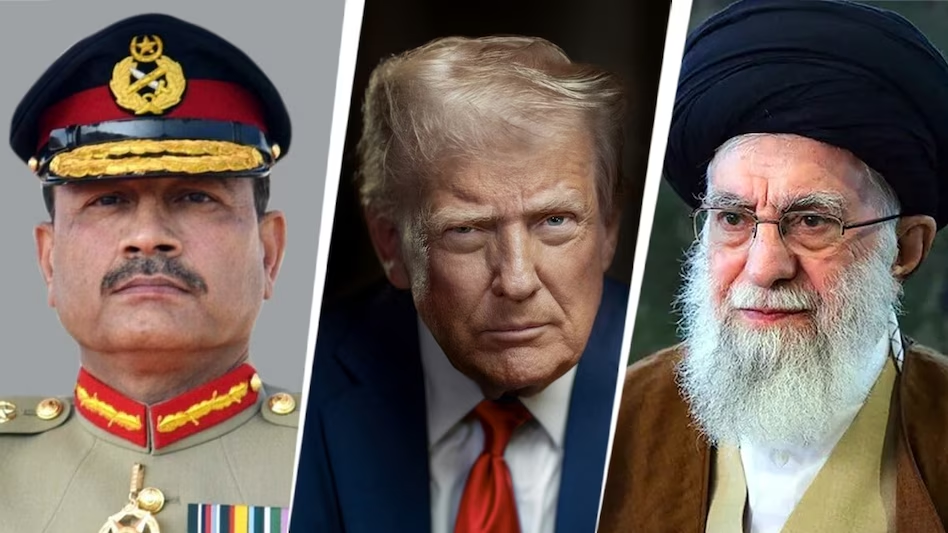
VI. The Case for Diplomacy: Pakistan’s Call to Action
Pakistan’s diplomatic history—mediating Saudi–Iran ties in 2019 and hosting OIC summits—positions it to advocate de-escalation. The U.S. must heed Iraq and Afghanistan lessons, where interventions spawned chaos. Iran’s nuclear programme, under IAEA scrutiny with no weaponisation evidence, requires a verifiable agreement, as Crocker suggests. The White House meeting opens a channel for Pakistan to urge restraint, leveraging its Iran ties.
Pakistan can rally China and Turkey through the Shanghai Cooperation Organisation, where Iran and Pakistan are members, to push for dialogue. Prime Minister Sharif should urge Trump to prioritise negotiations, offering Oman or Qatar as venues. Foreign Minister Ishaq Dar can highlight war’s global fallout, rallying OIC support. Islamabad must bolster border security and coordinate with UNHCR for refugee contingencies, drawing on its 2025 counter-insurgency experience.
VII. Conclusion: Averting the Abyss
The U.S. stands at a crossroads, with military action pitted against war’s sobering realities. Trump’s lunch with Field Marshal Munir, lauding his “extremely influential” role, underscores Pakistan’s pivotal position amid the Israel–Iran crisis. Yet, Trump’s indecision—“Nobody knows what I’m going to do”—reflects the gravity of intervention, where risks outweigh rewards. For Pakistan, a U.S.–Iran war would threaten economic collapse, regional instability, and strategic marginalisation. Islamabad’s voice, tempered by surviving Middle Eastern tremors, must champion diplomacy. The Middle East cannot endure another war, and Pakistan, with its moral and strategic weight, must lead the charge to pull the region back from the abyss.

